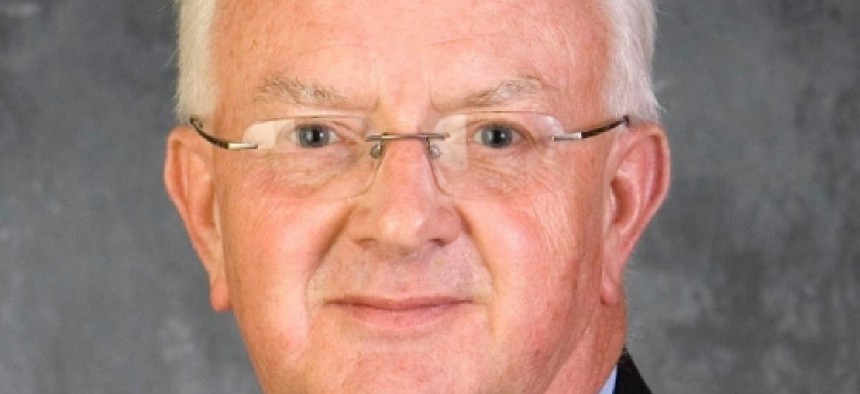Infrastructure
For General Assembly, state government overhaul might start at home

PA Rep. Jerry Knowles - from his Facebook page
For the Pennsylvania General Assembly, restructuring state government might begin at the Capitol.
House Majority Leader Dave Reed (R-Indiana) has made waves recently, reiterating his belief – and setting a tone for priorities of at least the House Republican caucus – that the way to close increasing state budget deficits is by rethinking how state government operates and provides services.
“There’s a challenge ahead of us and we’re going to have to find a way to balance the budget not just this year, but next year,” he stated shortly after the caucus unanimously re-elected him as Majority Leader in November. “[T]hat may take a broader conversation about what we expect government to look like in Pennsylvania – restructuring the government as we know it – but we’ll meet with the governor to work through those particular solutions."
When the new legislative session starts in January, the conversation may first be about putting the Legislature’s money where its mouth is, at least in terms of the House of Representatives, where Rep. Jerry Knowles (R-Schuylkill) has recently started the process of putting before the House his proposal to reduce its size from 203 members to 151 members.
Last session, the General Assembly overwhelmingly approved the Constitutional amendment in the first of a three-step process to alter Pennsylvania’s overarching governing document.
This session, should the identical proposal pass the Legislature, it would then be submitted to the voters in a referendum. If the voters approve the proposal, the size of the House would be reduced to 151 members starting in 2022, the first election to take place after the 2020 census.
According to a report last session from the conservative-led legislative Taxpayer Caucus, the reduction in the size of the House could save between $10 million and $15 million annually once it takes effect.
Knowles, speaking just before the Christmas holiday, said he is pushing for the reduction in the House not necessarily because of any cost savings, but rather more due to the unwieldy nature of such a large body.
“Money certainly has something to do with it,” he said. “But, in my eyes, all you need to do is sit back and watch the House in session. I just believe that, at times, it’s very difficult to function.”
He said a smaller House would make it easier for members to build consensus.
The proposal was co-sponsored last session by, among others, Speaker of the House Mike Turzai (R-Allegheny), Majority Leader Dave Reed (R-Indiana), and now-Majority Appropriations Committee Chairman Stan Saylor (R-York).
While the proposal did pass the Legislature overwhelmingly last session in a strongly bipartisan vote (139-56 in the House and 43-6 in the Senate), it did have opponents who were concerned that increasing the size of legislative districts – thereby adding more constituents for whom House members will be responsible for – would have a disproportionately adverse impact on rural areas where constituents and lawmakers might already have to travel several hours to reach one another.
As it currently stands, the change in House membership would increase constituency size from around 62,500 Pennsylvania residents per member to around 83,000 residents per member.
According to Rep. Knowles, such concerns can be assuaged through deployment of technological advancements that make distance communication easier and additional work on behalf of lawmakers to ensure their presence is known in their respective districts.
“With the technology today…all of these tools that were never available back in the days, I think it would be easier dealing with that many people than it would have been 20 years ago,” he said.
Moreover, he added, since the last reapportionment, some legislative districts have already grown well beyond their original constituency levels.
Attempts last session to tie the issue to redistricting reform and return the General Assembly to a part-time legislature were unsuccessful.
In sum, Rep. Knowles said, those who are unsure about whether to support the plan to reduce the size of the House of Representatives should support it since, at the end, it lets the voters decide how large their legislative body is.
“I think the most important part of this whole story is, the decision will be made by the people of Pennsylvania,” he said. “All you are doing is affording the people of Pennsylvania to make this decision as to whether we should have 203 members of the House or 151. Let’s give them this opportunity because I have heard nothing – with a few exceptions – except positive comments [about the reduction] from the general public.”
While the Senate is anticipating taking up the proposal to reduce the size of the House should it make it there this session, there is no similar proposal to reduce the size of Pennsylvania’s upper legislative chamber.
"Reducing the size of the House is something that we would expect to be revisited," said Senate Republican spokesperson Jenn Kocher. "The bill we received last year did not address the Senate and there has been some hesitation in the past to further increase the number of constituents for members of the Senate because of the real possibility of harming constituent service. But with a new session, everything is open for discussion."
Jason Gottesman is the Harrisburg bureau chief for The PLS Reporter, a non-partisan, online news site devoted to covering Pennsylvania government.
NEXT STORY: Does ballot position matter? Science says ‘Yes’